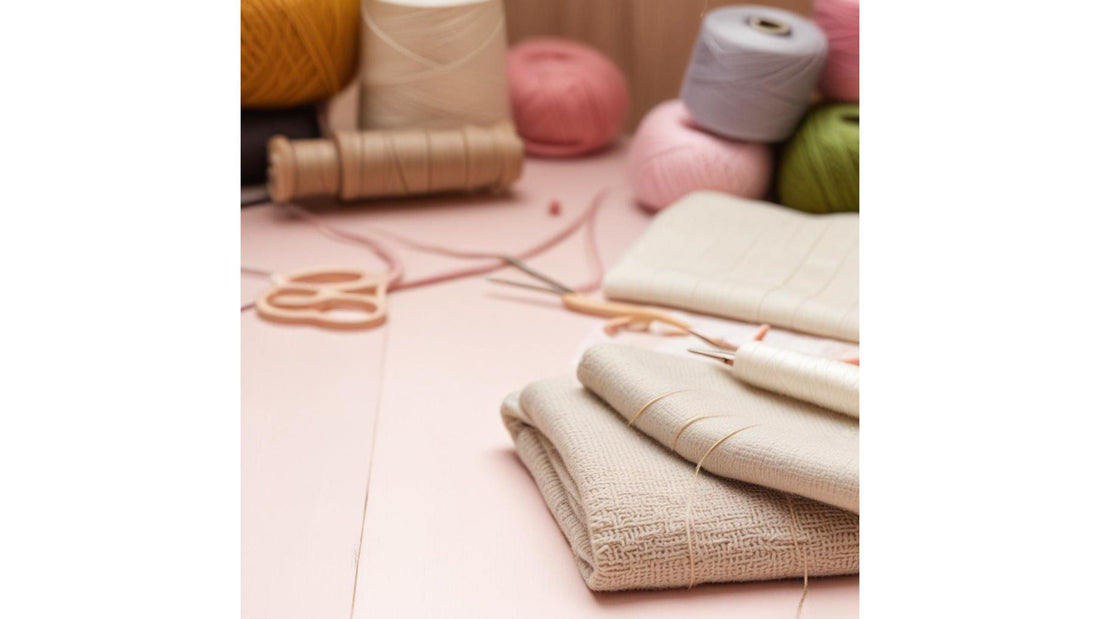
Types of Fabrics for Punch Needle: Uses, Needle Compatibility, and Finishes
Share
🧵 Types of Fabrics for Punch Needle: Uses, Needle Sizes & Finishing Effects
The success of your punch needle projects depends largely on your choice of fabric. Each fabric type has unique characteristics that influence your final result—from texture and tension to the overall finish.
In this guide, we break down the most common fabric types used in punch needle embroidery, their ideal applications, compatible needle sizes, and the kind of texture and look you can achieve with each one.
1. Monk’s Cloth
Characteristics:
A 100% cotton fabric with an open weave that allows punch needles to pass through easily. It’s flexible yet durable, making it a favorite among both beginners and advanced crafters.
Best for:
Wall hangings, pillows, and decorative pieces where uniform loop texture is desired.
Recommended needle:
Thick needles (3 mm or larger) work best on this fabric.
Finish:
Creates compact, even loops—ideal for well-defined, high-texture designs.
2. Linen
Characteristics:
A slightly tighter weave than monk’s cloth, linen is firmer and of higher quality. It provides a smooth surface, perfect for more detailed work.
Best for:
Elegant home décor like framed pieces, table runners, or refined decorative items.
Recommended needle:
Medium-sized needles (2 mm to 3 mm) paired with finer threads or embroidery floss.
Finish:
Produces smaller, precise loops with a cleaner, more polished look.
3. Burlap (Hessian/Jute)
Characteristics:
A rustic, loosely woven, and budget-friendly fabric. It’s less durable but great for experimental or low-cost projects.
Best for:
Rugs, tote bags, or any project with a raw, earthy aesthetic.
Recommended needle:
Large needles (4 mm or more), since the loose weave works best with thicker yarns.
Finish:
Yields chunky, bold loops—perfect for handcrafted, textural pieces with a rustic feel.
4. Cotton Canvas
Characteristics:
A dense, sturdy fabric that may require a bit more effort when punching. However, it’s highly durable and holds its shape well.
Best for:
Accessories like bags, pouches, or projects that need a bit of extra structure and strength.
Recommended needle:
Fine needles (1.5 mm to 2.5 mm) used with lightweight yarn or embroidery thread.
Finish:
Results in flat, crisp stitches—ideal for sleek, stylized designs.
5. Nylon Fabric
Characteristics:
A synthetic material with a smooth texture. Known for its durability, it's a good choice for high-use functional items.
Best for:
Floor mats, cushion covers, or utility-based projects.
Recommended needle:
Medium to large punch needles, depending on yarn weight.
Finish:
Firm, springy loops that create a strong and resilient finish.
🧵✨ Tips for Choosing the Right Fabric
-
Consider your design:
Linen and monk’s cloth are ideal for detailed work, while burlap is better suited for bold, large-scale projects. -
Think about functionality:
For decorative pieces, go for softer fabrics like linen. For more functional projects, such as rugs, use stronger materials like burlap or nylon. -
Experiment and combine:
Try different fabric and needle combinations to find what works best for your style and technique.
🎯 Conclusion
Your choice of fabric, needle, and yarn will define the texture and overall feel of your punch needle piece. Each material offers something unique—from refined, delicate finishes to raw, handcrafted charm. Let your creativity lead the way and experiment with different combinations to discover your own voice in the world of punch needle art.
Ready to get started?
Browse our collection of curated fabrics and high-quality tools to take your punch needle projects to the next level.
